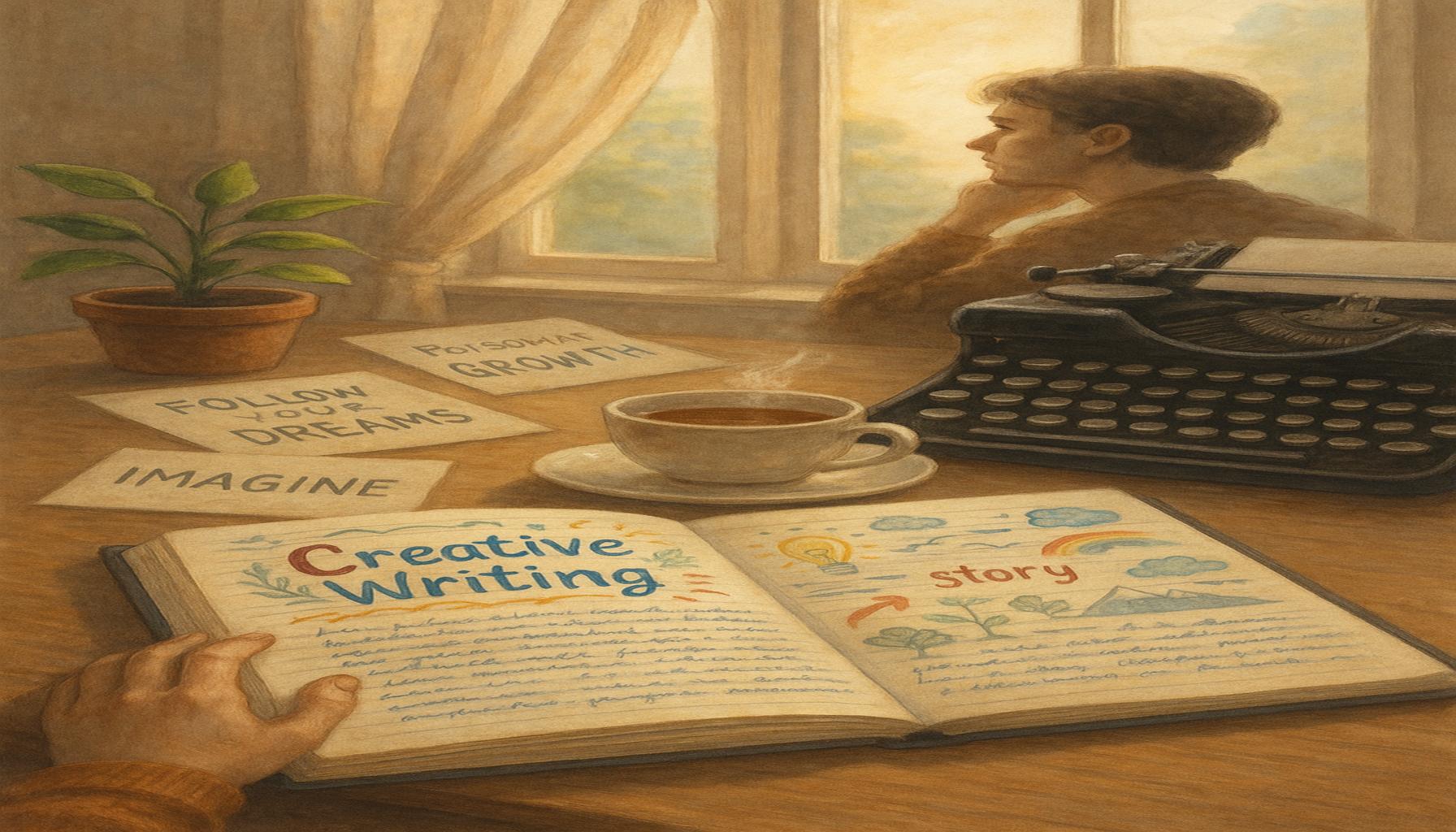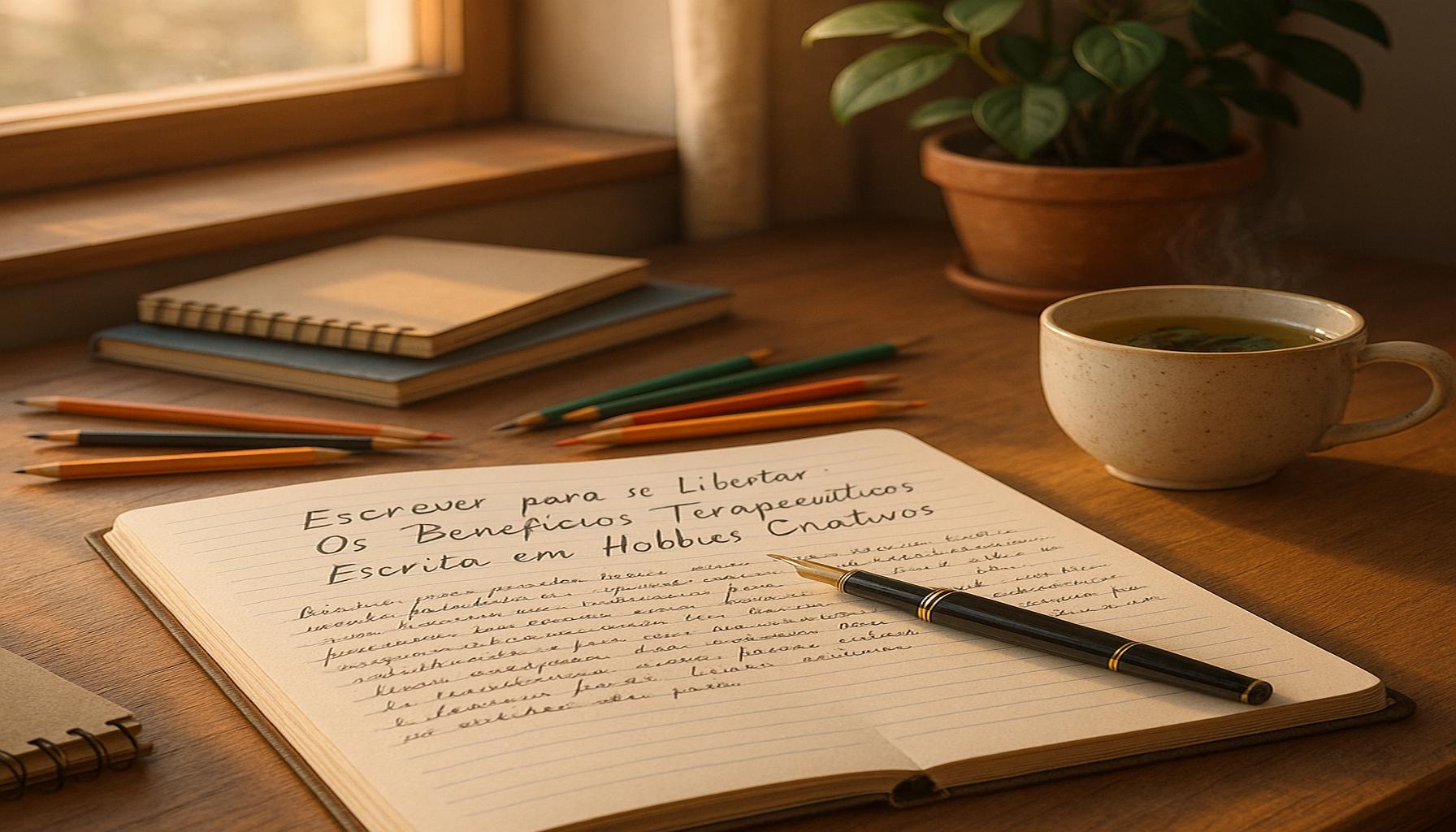Discover Your Unique Writing Voice Explore Different Writing Styles

Unleashing Your Creativity
Finding your own writing voice is a crucial step for anyone looking to develop their craft and engage an audience. Whether you’re a hobbyist or a budding author, understanding different writing styles can enhance your creative expression and make your work stand out.
In a world overflowing with content, it’s essential to carve out a niche that reflects your individuality. This article will guide you through various writing styles and provide the tools you need to identify and cultivate your unique voice.
Why Explore Different Styles?
- Inspiration: Exposure to diverse styles can spark new ideas.
- Growth: Experimenting allows you to refine your skills.
- Connection: Finding your voice helps foster a deeper connection with your audience.
Get ready to explore the top five writing styles that can shape your creative journey and empower you to express yourself in ways you never imagined.
Exploring Different Writing Styles: How to Find Your Unique Voice
Finding your unique writing voice can be a thrilling journey of self-discovery, whether you’re an aspiring author, a blogger, or someone who enjoys journaling. Our exploration of top writing styles aims to illuminate diverse approaches to writing, helping you explore and ultimately identify your distinctive voice. Let’s delve into the essence of these styles, each offering a unique path towards self-expression and reader connection.
5. Narrative Writing: Storytelling at its Finest
Narrative writing is the art of storytelling, often unfolding with a clear sequence of events. It captivates readers through its development of characters, detailed settings, and engaging plots. By weaving personal anecdotes or crafting fictional tales, writers can express emotions and experiences with vivid clarity. This style serves as an excellent foundation for both beginners and seasoned writers seeking to connect deeply with their audience.

The core attributes of narrative writing include:
- Focus on character development: Crafting relatable and multi-dimensional characters that evolve throughout the story.
- Engaging plots: Constructing narratives that capture attention, with twists and turns that maintain reader interest.
- Descriptive language: Employing vivid descriptions to create engaging imagery and immersive settings.
Enhancing your narrative skills can help you uncover your voice through storytelling. This style allows you to resonate with your audience, whether chronicling real-life events or inventing imaginative tales.
4. Descriptive Writing: Painting with Words
Descriptive writing enriches your prose through vivid imagery and detailed observations. It aims to engage the senses—sight, sound, smell, touch, and taste—bringing experiences to life for readers. This writing style is particularly suited for those who thrive on the richness of detail and wish to evoke strong emotional responses through their work.
Key elements of descriptive writing include:
- Use of sensory details: Incorporating metaphors and similes to enhance readers’ sensory experiences.
- Evocative adjectives and adverbs: Selecting words that emphasize visuals and add depth to descriptions.
- Emotional connection: Tying emotions to the imagery, ensuring readers feel alongside the narrative.
By practicing descriptive writing, you can explore the nuances of your voice. This exploration helps express individuality through unique perspectives of observations and settings, making your writing distinctive and memorable.
3. Expository Writing: Informative and Straightforward
Expository writing is centered around explaining, informing, and clarifying ideas to the reader. Its clear and concise nature makes it ideal for essays, articles, and reports. Here, the goal is to present information or instructions with minimal personal opinion, challenging writers to distill complex ideas into understandable content.
The essential components of expository writing are:
- Clarity and precision: Utilizing straightforward language to communicate ideas effectively.
- Logical organization: Presenting information in a coherent structure that facilitates comprehension.
- Objective perspective: Maintaining a focus on facts and evidence rather than personal opinion.
Adopting this style can refine your capability to communicate effectively. It helps shape your voice to be perceived as authoritative and trustworthy, essential qualities in many professional contexts.
2. Persuasive Writing: Conviction and Influence
Persuasive writing seeks to convince readers to adopt a particular viewpoint or take a specific action. It uses a blend of emotion, logic, and credible evidence to build compelling arguments. This style is crucial for anyone interested in writing opinion pieces, advertising, or content meant to sway readers’ decisions.
Prominent features of persuasive writing include:
- Clear stance: Establishing a firm position on an issue or topic.
- Emotional appeal: Engaging readers’ emotions to reinforce arguments.
- Logical reasoning: Supporting points with facts and logical arguments to establish credibility.
Exploring persuasive writing can develop a powerful voice, helping you imbue your messages with conviction and passion. This style is vital for those looking to influence and inspire through written communication.
1. Creative Writing: The Heart of Individual Expression
At the pinnacle of diverse writing styles, creative writing encompasses poetry, fiction, and other imaginative works. It acts as an authentic reflection of the writer’s thoughts, emotions, and inner world. Creative writing encourages experimentation with language, fostering original expressions and helping you discover your unique voice.
Aspects of creative writing to embrace include:
- Imagination and originality: Pushing the boundaries of conventional writing to create unique narratives.
- Personal reflections: Incorporating inner thoughts and emotions, allowing for authentic self-expression.
- Versatile formats: Exploring varied formats such as poetry and short stories to develop a unique style.
Immersing yourself in creative writing can liberate your mind and heart, enabling you to craft a distinctive voice that resonates both with you and your audience. This style serves as a canvas for personal expression and limitless creativity.
Embracing Your Writing Journey
In conclusion, the journey to finding your unique writing voice involves exploring various styles. Each form offers a different lens through which you can express your thoughts and connect with readers. By experimenting with these distinct styles, you may discover a fascinating identity that shines through your writing, captivating your audience and setting you apart in the literary world.
Whether narrating a compelling story, painting vivid imagery, explaining complex topics, swaying opinions, or crafting imaginative works, each style contributes to the tapestry of your writing identity. Embrace the journey, and let each experience bring you closer to your authentic voice.
| Category 1 | Category 2 | Category 3 | Category 4 | Category 5 |
|---|---|---|---|---|
| Narrative Style | Character-driven storytelling that emphasizes personal experiences. | Creates engaging and relatable stories that resonate with readers. | May be too subjective for readers seeking objective analysis. | Aspiring novelists and memoir writers looking to share authentic experiences. |
| Descriptive Writing | Uses vivid imagery to paint a picture in the reader’s mind. | Enhances storytelling by making scenes and emotions more tangible. | Overly elaborate descriptions can slow the pace of the narrative. | Writers of poetry, travel articles, or those wanting to evoke strong imagery. |
| Persuasive Writing | Focuses on convincing the reader of a particular viewpoint. | Effective in advocating for social change or promoting products. | May alienate readers who disagree with the perspective presented. | Bloggers, marketers, and activists aiming to foster engagement and action. |
| Technical Writing | Involves clear, concise information designed for specific audiences. | Provides crucial instructions and knowledge in an easily digestible format. | Can lack a personal touch, making it less engaging for general audiences. | Professionals in industries requiring precise specification or guidelines. |
Exploring various writing styles is essential for discovering your unique voice. Each category brings its own strengths and challenges, highlighting the diverse avenues available to writers. For instance, the narrative style allows you to delve deeply into personal experiences, allowing readers to connect on a more personal level. However, it also requires a careful balance to ensure that the subjective nature of the writing doesn’t overshadow the story’s essence.On the other hand, descriptive writing can transform a simple scene into vibrant imagery, engaging the reader’s senses and emotions. It is a powerful tool for creating atmospheres, whether you’re crafting a novel, penning poetry, or detailing a travel experience. Yet, overindulgence in description might lead to pacing issues, which is why moderation is key.Persuasive writing stands distinct in its intentional aim to sway opinions or provoke thoughtful responses. This style shines in the context of advocacy, providing a platform for impactful storytelling that can drive societal change. Nonetheless, it carries the risk of losing some readers who may feel sidelined if they do not share the same perspective.Lastly, technical writing requires a level of precision that is paramount in fields where accuracy is critical. It emphasizes clarity and functionality, making complex information accessible. This style is prevalent in instruction manuals and guidelines, benefiting individuals seeking straightforward knowledge without embellishment. However, this effectiveness may sometimes lead to a disconnection from a broader audience, craving more relatable content.By understanding these styles and their intricacies, you can better navigate the writing landscape and find your voice amidst the variety. Exploring these elements offers writers the opportunity to experiment, adapt, and eventually carve out a unique space in the literary world.
Frequently Asked Questions About Exploring Different Writing Styles
How can I identify my unique writing style?
Discovering your unique writing style involves a combination of self-reflection, experimentation, and analysis. Start by identifying your influences: who are the writers that inspire you? Next, practice writing in different genres to see which feels most comfortable and expressive. Pay attention to feedback from others and scrutinize your writing to note recurring elements. Your unique style often emerges from your personal voice, perspective, and choice of words. Over time, with continuous practice, you will naturally hone in on what sets your writing apart.
Is it possible to combine multiple writing styles?
Absolutely! Many successful writers blend styles to create something new and compelling. Mixing styles can enhance your writing’s depth and broaden its appeal. For instance, incorporating elements of narrative storytelling in a technical article might engage readers more effectively. However, be mindful of maintaining a consistent voice so that the writing remains coherent. Experimentation is key, but always consider the audience and purpose of your piece.
What role does reader feedback play in developing my writing style?
Reader feedback is invaluable for writers seeking to refine their style. It provides insight into how your writing is perceived and highlights areas for improvement. Engaging with readers allows you to understand which aspects of your writing resonate and which might need adjustment. Embrace constructive criticism as an opportunity for growth, but always remember to stay true to your authentic voice. Feedback is a guide, not a directive.
Can my writing style evolve over time?
Yes, a writer’s style is often dynamic and can evolve significantly. As you gain more experience and your interests and influences change, so too might your style. This evolution is a natural part of a writer’s journey. Growth may come from varied life experiences, exposure to diverse literary works, or simply from honing your craft over time. Embrace these changes as they indicate personal and professional development in your writing.
Conclusion
In the journey to discover one’s unique writing style, the exploration of different writing techniques serves as an essential pillar in creative hobbies. Experimentation with various styles enables writers to gain confidence and clarity in their voice, creating a distinct personal narrative that can captivate any audience. By delving into a range of approaches, whether through storytelling, persuasive writing, or poetic expression, individuals start to articulate their thoughts in an authentic and compelling manner.
Understanding the core elements that make up diverse writing styles offers a rich tapestry of tools from which to draw inspiration. As highlighted in the article, writers can greatly benefit from analyzing and practicing forms that resonate with them personally, thus paving the way to a more nuanced voice. Exploring the foundational principles of each style enhances creativity, providing a framework within which originality can flourish.
Moreover, the prominent figures in the literary world often speak to the significance of embracing one’s unique perspective, reinforcing the idea that one’s voice is the most valuable asset a writer possesses. Consistency, practice, and reflection are key to honing a personal style that stands out in a world saturated with diverse narratives.
Ultimately, finding your unique voice is not a destination but a continual process of growth and self-discovery. By dedicating time and effort to exploring different writing styles, writers open themselves to endless possibilities, enriching their creative journey. This quest for authenticity not only enhances personal satisfaction but also expands the horizons of creative expression, encouraging others to embark on their own unique exploration.


